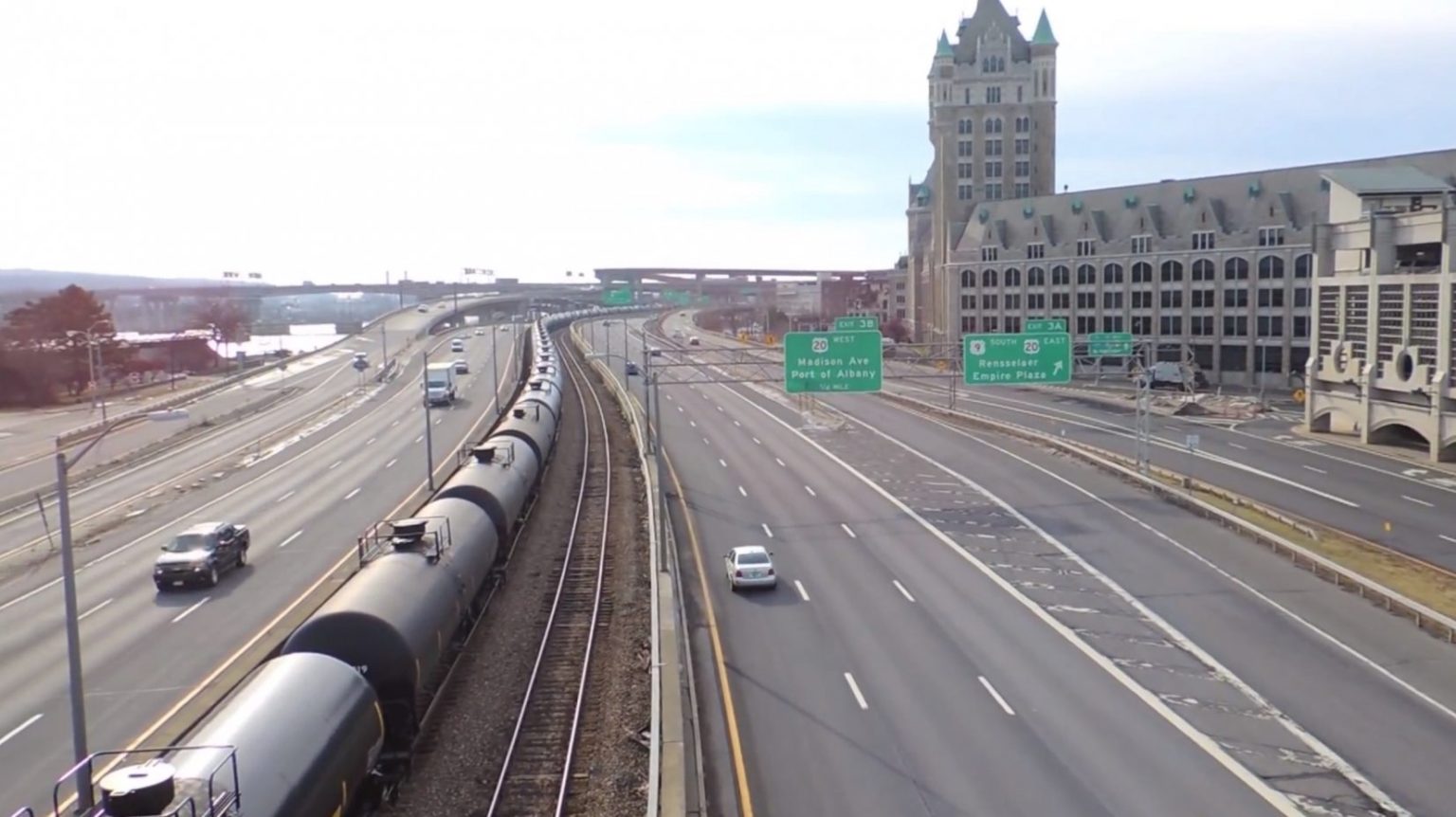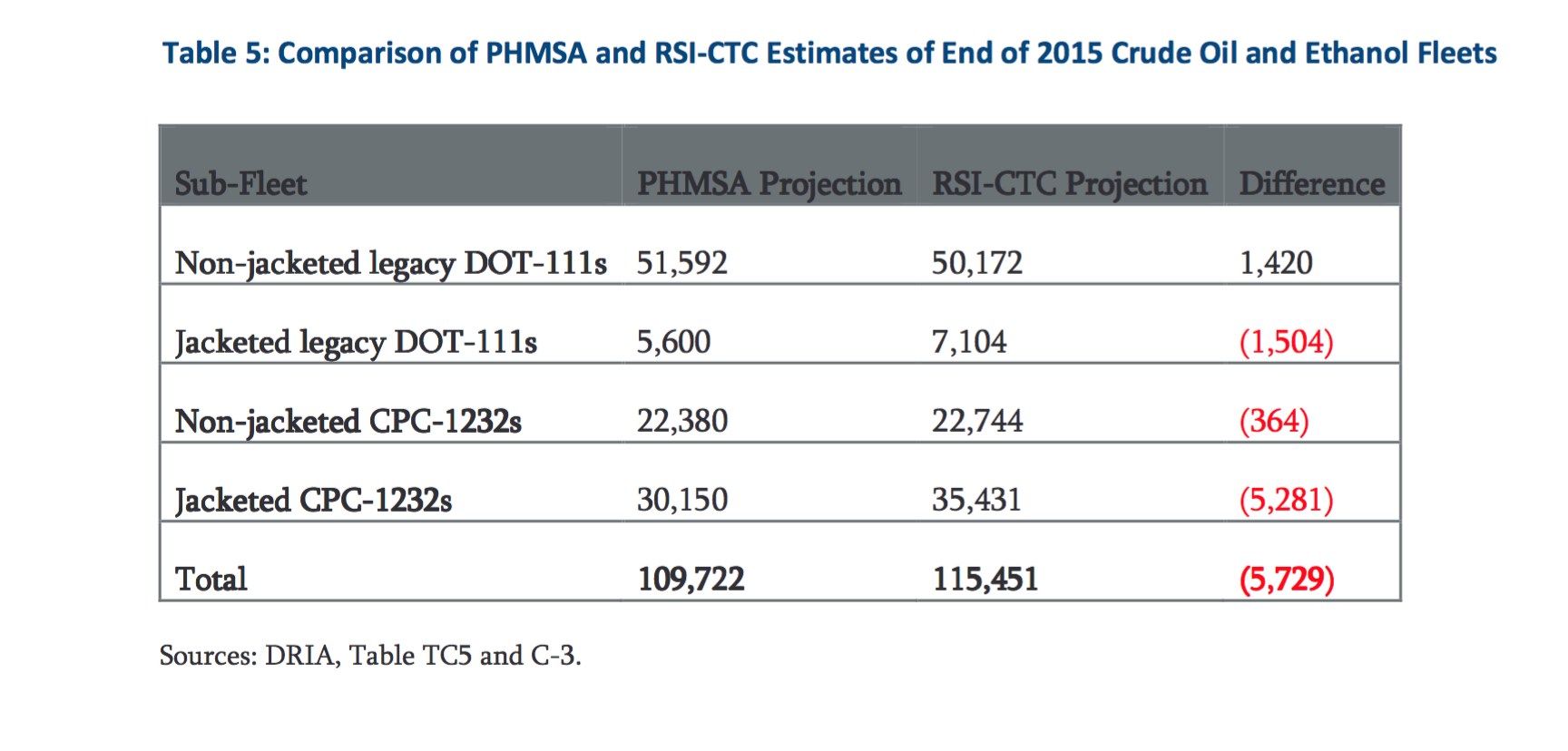A year ago, when Federal regulators announced new rules for “high hazard” trains moving crude oil and ethanol, the oil industry protested that the rules were too strict. The main point of contention made by the American Petroleum Institute (API) was that the requirement to retrofit the unsafe DOT-111 and DOT-1232 tank cars within ten years did not allow enough time to get the job done.
Meanwhile, according to information recently provided to DeSmog by the Association of American Railroads, only 225 of the tank cars have been retrofitted in the past year. So, the API may have been onto something because at that rate it will take roughly 500 years to retrofit the entire fleet of DOT-111s and CPC-1232s based on government and industry estimates of fleet size of approximately 110,000.
As DeSmog reported earlier this year, the FAST Act transportation bill that passed in 2015 required that all DOT-111s that have not been retrofitted be retired from crude oil service by 2018. But the bill included the option that “The Secretary may extend the deadlines…if the Secretary determines that insufficient retrofitting shop capacity will prevent the phase-out of tank cars.”
However, prior to the new rule being finalized, Greg Saxton — a representative of leading tank car manufacturer Greenbrier — testified in Congress that there was sufficient shop capacity to meet the timeline noting that,“This is an aggressive timeline, we believe it is achievable.”
Saxton also made the assertion that the lack of new regulations was the issue that was delaying the safety retrofits.
“The only thing holding the industry back is the government’s inaction on proposed new tank car design standards and a deadline for having an upgraded rail tank car fleet.”
Now a year after the new rule was announced, with a mere 225 cars undergoing the safety upgrades, it would appear that was not the only thing holding back the industry.
DeSmog reached out to the Railway Supply Institute, leading oil-by-rail carrier BNSF, and Greenbrier to inquire about the lack of retrofits to date and asked if shop capacity was an issue, but did not receive any response. The Association of American Railroads and the Federal Railroad Administration were unable to provide information on shop capacity.
Unlike Safety, Public Relations On Schedule
Despite not actually making any significant safety improvements to the unsafe DOT-111 tank cars — tank cars called an “unacceptable public risk” by a member of the National Transportation Safety Board — the public relations effort to push the idea that the issue has been addressed appears to be successful.
In an article published in Chicago Magazine in April 2016, the risks of oil-by-rail were covered in detail. However, that article included the following statement, “Those first-generation tank cars, called DOT-111s, have almost all been subjected to new protections, including having their shells reinforced with steel a sixteenth of an inch thicker than used in earlier models.”
But 225 tanker cars clearly does not qualify as “almost all” of the DOT-111 oil tank car fleet.
An article published shortly after the FAST Act was signed ran with the headline, “New Highway Bill Includes Tough Rules for Oil Trains.” Again, this would seem like overstating the reality of what the bill included.
As DeSmog has noted before, the oil and rail industries are very good at public relations when it concerns this topic. However, as when BNSF said they were buying 5,000 new tank cars that would exceed all safety standards, it often never results in anything more than a press release and some media coverage. BNSF never purchased the 5,000 tank cars.
Unsafe Tank Cars Can Carry More Oil and Bring Higher Profits
In January, Christopher A. Hart, the head of the National Transportation Safety Board, presented his remarks on the NTSB’s safety “Most Wanted List” and once again mentioned the risk of the DOT-111s in moving crude oil.
“We have been lucky thus far that derailments involving flammable liquids in America have not yet occurred in a populated area,” Hart said. “But an American version of Lac-Megantic could happen at any time.”
Why would the industry want to take this risk? Could it be because unsafe cars are more profitable?
The more oil a tank car can haul, the more profitable that oil train will be. The way rail works is that the weight of the car plus the weight of the cargo can only combine to be a certain amount. If your tank car weighs less, you can put in more oil because it effectively has more capacity.
Exxon made this case to regulators prior to the rulemaking. Check out this slide the company presented that points out that adding safety measures “reduces capacity” — which reduces profit.
Tank cars full of volatile Bakken crude oil — deemed an “unacceptable public risk” by an NTSB member — continue to move through communities across North America. And the tank car owners are not moving to make the required safety retrofits.
While oil-by-rail traffic is declining with the current low oil prices, that is unlikely to continue. And with the lack of pipeline infrastructure needed to move dilbit from ever-increasing tar sands oil production, industry opinion holds that rail has a good chance of making a comeback. And they are going to need rail cars to move that oil.
The question remains: Will the Secretary of the Department of Transportation use the loophole in the FAST Act to grant the industry an extension on using DOT-111s past 2018?
If history is any indication, with rail safety improvements such as positive train control being repeatedly delayed for decades — including a recent three-year extension by Congress — it would appear that is a likely outcome if the DOT-111s are needed by the oil industry.
This makes the prediction by the head of the NTSB that “an American version of Lac-Megantic could happen at any time” all the more likely to eventually occur.
Blog Image Credit: Justin Mikulka
Subscribe to our newsletter
Stay up to date with DeSmog news and alerts








